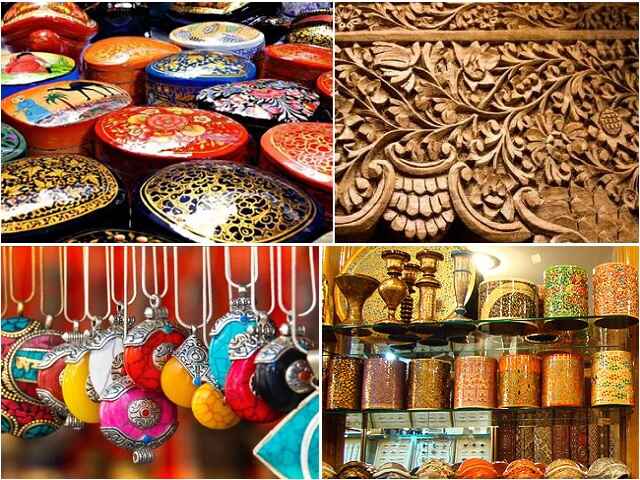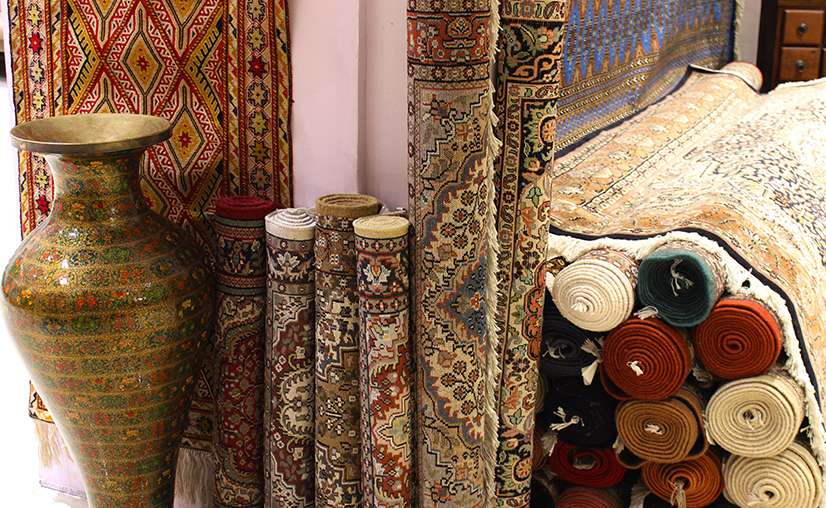The Indian Handicraft Industry: A Cultural and Economic Powerhouse
November 30, 2024 | by gurjeetsaini@yahoo.com

Introduction
The handicraft sector stands as one of the most pivotal contributors to the Indian economy, employing over seven million people nationwide. Renowned for its diversity, the sector produces an array of products, including woodware, art metal wares, hand-printed textiles, embroidered goods, zari items, imitation jewelry, sculptures, pottery, glassware, attars, and agarbattis.
This thriving industry, dominated by female artisans who constitute 56% of the workforce, is deeply rooted in India’s rural and semi-urban regions. With 744 handicraft clusters employing approximately 212,000 artisans and offering over 35,000 products, cities such as Surat, Bareilly, Varanasi, Agra, Hyderabad, Lucknow, Chennai, and Mumbai serve as hubs of creativity and craftsmanship. Beyond domestic markets, the sector boasts immense export potential, offering unique goods that attract buyers from across the globe.
Market Trends Driving Growth
In recent years, the Indian handicraft industry has witnessed significant advancements due to the availability of products on online platforms. Additionally, the burgeoning tourism industry plays a crucial role in fueling demand for souvenirs and artisan goods, creating substantial opportunities for local craftspeople.
The rising popularity of handmade décor for homes, offices, and restaurants and its increased use in the gifting industry further bolster the sector’s growth. The appeal of Indian handicrafts lies in their low capital investment, high-value addition, and immense export potential, making the industry an economically viable choice for artisans and entrepreneurs alike.
The Booming Handicrafts Export Market
Product-wise Growth
The Indian handicrafts market is witnessing exponential growth. Valued at US$ 4,277.5 million in 2023, it is projected to reach US$ 7,817.8 million by 2032, registering a robust CAGR of 6.9% during the 2023–2032 period. Increasing accessibility through online platforms and the surge in domestic travel and tourism have propelled this growth, with tourists investing heavily in souvenirs and artisanal products.
Export Performance
India is a global leader in handicrafts exports, particularly in handmade carpets. From April to July 2024, handicrafts exports amounted to Rs. 9,917.99 crore (US$ 1.18 billion), reflecting a marginal increase from the same period in the previous year.
In FY23, the total export value of Indian handicrafts reached Rs. 30,019 crore (US$ 3.60 billion), with carpets alone accounting for US$ 1.36 billion. This segment remains a dominant export, with India contributing approximately 40% of the global market for handmade carpets. Key export items include:
- Woodwares: US$ 302.08 million
- Embroidered & Crocheted Goods: US$ 160.79 million
- Art Metal Wares: US$ 163.94 million
- Hand-Printed Textiles and Scarves: US$ 73.46 million
- Imitation Jewelry: US$ 51.64 million
- Miscellaneous Handicrafts: US$ 381.56 million
Export Destinations
Indian handicrafts are highly sought after in international markets due to their uniqueness and aesthetic appeal. Major export destinations include:
- USA: Leading importer with 37% of total exports in 2022-23, importing a wide range of items such as hand-printed textiles, embroidered goods, imitation jewelry, and handmade carpets.
- UAE: Significant buyer of hand-printed textiles, embroidery goods, and art metalware.
- UK: Purchases a diverse array of products including art items, crocheted goods, woodwares, and imitation jewelry.
- Germany: Popular for handmade and silk carpets and art metalwares.
In FY22, the USA imported US$ 1.28 billion worth of carpets, reinforcing its status as India’s top handicrafts buyer. Similarly, Germany, the UAE, and the UK are increasingly drawn to India’s intricate craftsmanship and vibrant artistry.
Conclusion
The Indian handicraft sector is more than an industry—it is a cultural ambassador, showcasing the country’s rich heritage to the world. With rising demand both domestically and internationally, the industry is poised for unparalleled growth. By leveraging online platforms, enhancing product quality, and expanding global reach, the sector can achieve even greater heights, ensuring sustainable livelihoods for millions of artisans and preserving India’s artistic legacy for generations to come.
RELATED POSTS
View all



